Never seen this before but here are the pics on my 3 year old plus pepper plant. I don't know the strain but the pods are hot and i believe they are of the habanero variety.
-
If you need help identifying a pepper, disease, or plant issue, please post in Identification.
You are using an out of date browser. It may not display this or other websites correctly.
You should upgrade or use an alternative browser.
You should upgrade or use an alternative browser.
pics conjoined pepper leaf pics on three year old plus plant
- Thread starter mcraighead
- Start date
This is my third year growing peppers and I have seen it happen before but not as much as this year.
This is an overwintered plant that I grew from seeds from a store-bought bell pepper.
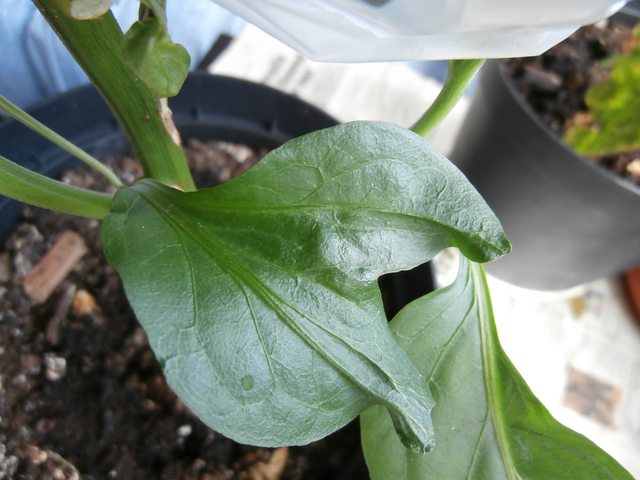
This year I'm growing crosses that I made last year between hot and sweet peppers (all grown from store-bought fruit). A majority of the ones that were crossed with a regular red chilli has had at least some strange growth.
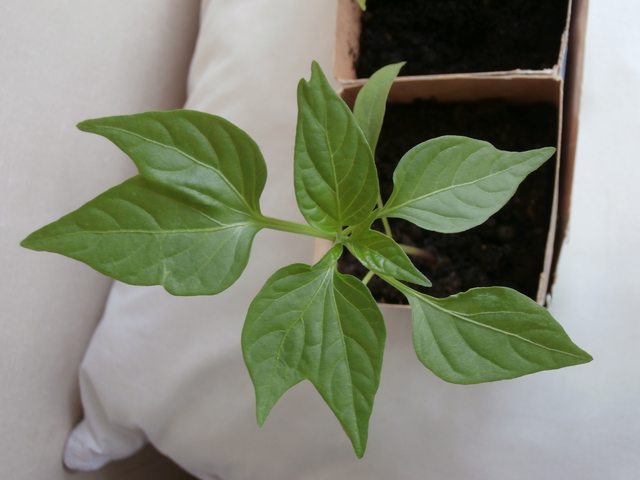
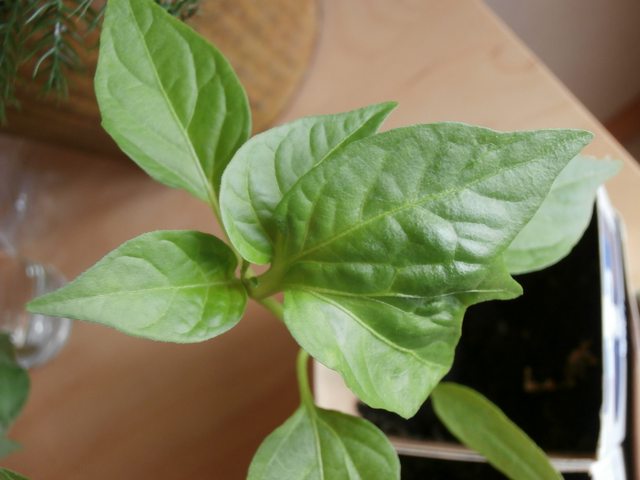

This one is a bit different. The plant just ended up with two leaves opposite each other with no grow tip in the middle. Now it has instead started branching out from the sides.
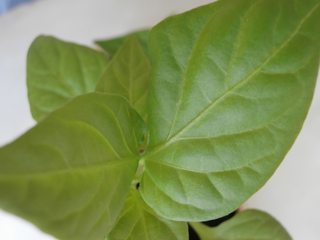
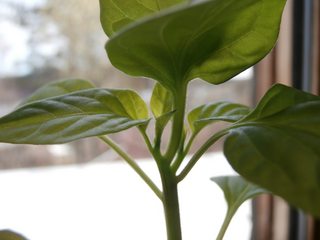
I don't know what is causing this. My main suspects are genetics and soil. The new leaves seems to be more normal so I suspect they will grow into pretty normal-looking plants.
This is an overwintered plant that I grew from seeds from a store-bought bell pepper.

This year I'm growing crosses that I made last year between hot and sweet peppers (all grown from store-bought fruit). A majority of the ones that were crossed with a regular red chilli has had at least some strange growth.



This one is a bit different. The plant just ended up with two leaves opposite each other with no grow tip in the middle. Now it has instead started branching out from the sides.


I don't know what is causing this. My main suspects are genetics and soil. The new leaves seems to be more normal so I suspect they will grow into pretty normal-looking plants.
This really perked my interest.. Digging deeper.
Here are some of the same plants almost two weeks later.
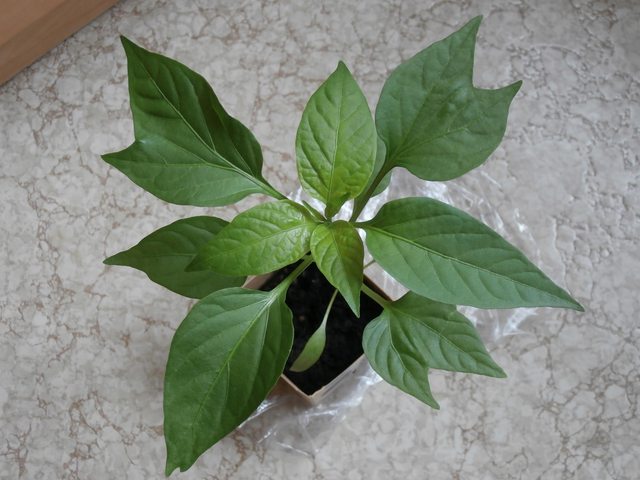
Three conjoined leaves (four if you count the double tip at the bottom) on the same plant.
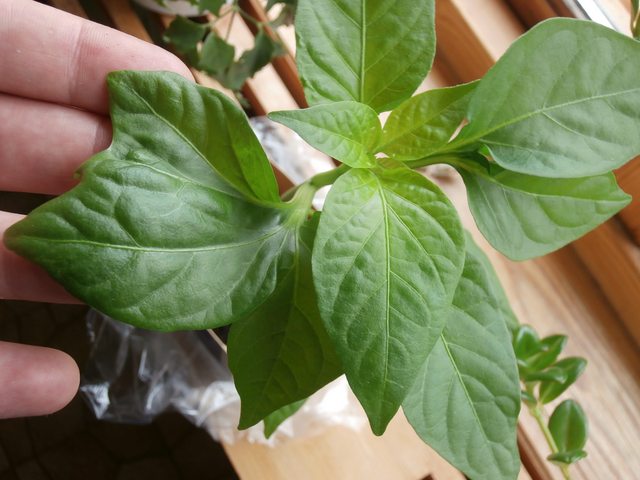
This leaf has four tips. Also note that there is a double leaf on the opposite side.
I made 8 crosses in total.
3 of these between hot peppers (annuum, chinense, and something that looks a bit like frutescens but could be annuum). None of them show any signs of malformation.
The remaining 5 crosses is between the hot annuum pepper (regular red chilli) and various sweet peppers. Out of these, 4 has at least one leaf that is conjoined/double. Two of these plants has branched early (not the normal Y branching were you get flower in the middle). And these are just the ones that I kept. I originally planted 3 seeds of each but only kept one plant. Many of the ones that I threw away also had signs of malformation.
Based on these facts I strongly suspect that genetics has something to do with it (or could it be a viral?). The three hot pepper plants that were used as mother in all of the malformed crosses had maybe one or two conjoined leaves (in total) when they were young, but I don't remember exactly. Perhaps more interesting was the fourth plant that only grew one set of true leaves. I waited a few months and the leaves grew quite big (I have never seen cotyledons that big on a pepper) but eventually I just gave up and threw it away. Note that all of these plants were grown from seeds from the same pod.
I'm wondering if the soil could also be partially responsible? I just put the seeds directly into "flower soil", didn't use any special potting soil. Is that likely to cause "problems" like these?

Three conjoined leaves (four if you count the double tip at the bottom) on the same plant.

This leaf has four tips. Also note that there is a double leaf on the opposite side.
I made 8 crosses in total.
3 of these between hot peppers (annuum, chinense, and something that looks a bit like frutescens but could be annuum). None of them show any signs of malformation.
The remaining 5 crosses is between the hot annuum pepper (regular red chilli) and various sweet peppers. Out of these, 4 has at least one leaf that is conjoined/double. Two of these plants has branched early (not the normal Y branching were you get flower in the middle). And these are just the ones that I kept. I originally planted 3 seeds of each but only kept one plant. Many of the ones that I threw away also had signs of malformation.
Based on these facts I strongly suspect that genetics has something to do with it (or could it be a viral?). The three hot pepper plants that were used as mother in all of the malformed crosses had maybe one or two conjoined leaves (in total) when they were young, but I don't remember exactly. Perhaps more interesting was the fourth plant that only grew one set of true leaves. I waited a few months and the leaves grew quite big (I have never seen cotyledons that big on a pepper) but eventually I just gave up and threw it away. Note that all of these plants were grown from seeds from the same pod.
I'm wondering if the soil could also be partially responsible? I just put the seeds directly into "flower soil", didn't use any special potting soil. Is that likely to cause "problems" like these?
I have experienced this as well with some of my seeds that became plants. Interested to hear but I'm thinking it has something to do with genetics..
Sent from my XT1565 using Tapatalk
Sent from my XT1565 using Tapatalk
This one had me wondering too so after a lot of reading its probably due to a temperature change (cooling) when the leaves were forming, but even though thats mentioned at a few sites like Michigan University, it is inconclusive and also minor jolts of temporary stress is also thought to be a cause from things other than temp changes haha.
Your transplanting them could have just stressed them a little at the right time?
Also looking at your pics it does appear all the mutated leaves are in about the same place in the growth, timewise.
Theyre mutants haha, enjoy it for what it is. None of the sites note any real issue with the health of the plant other than the mutations.
Considering there is no conclusive evidence either way, perhaps get some isolation nets and try and propogate a new strain if its not stress...J/K
Your transplanting them could have just stressed them a little at the right time?
Also looking at your pics it does appear all the mutated leaves are in about the same place in the growth, timewise.
Theyre mutants haha, enjoy it for what it is. None of the sites note any real issue with the health of the plant other than the mutations.
Considering there is no conclusive evidence either way, perhaps get some isolation nets and try and propogate a new strain if its not stress...J/K
I've had them on the windowsill so I guess a little bit of temperature fluctuation is unavoidable, but it has not been as bad as last year when the plants really slowed down from standing in a cold window. This spring has been relatively warm and I also started relatively late. The first month or so I even moved them from the window during the nights to avoid them getting cold.scrufy said:This one had me wondering too so after a lot of reading its probably due to a temperature change (cooling) when the leaves were forming, but even though thats mentioned at a few sites like Michigan University, it is inconclusive and also minor jolts of temporary stress is also thought to be a cause from things other than temp changes haha.
No, because they've been in these containers from the start.scrufy said:Your transplanting them could have just stressed them a little at the right time?
I might do that. Selectively breeding for this trait should be much easier compared to anything related to the fruit because it shows up so early. I can easily grow a large number of seedlings and start discarding the ones that look too normal at a very young age. Only plants with the most conjoined leaves would be allowed to grow into full size to produce seeds.scrufy said:Considering there is no conclusive evidence either way, perhaps get some isolation nets and try and propogate a new strain if its not stress...J/K
Unfortunately the new growth looks normal. If only young plants are affected the novelty value is very limited.
I hope so. I find a genetic explanation much more exciting than an environmental one.YAMracer754 said:Interested to hear but I'm thinking it has something to do with genetics..
I got one too on a Anaheim seedling. (Big Jim Heritage)
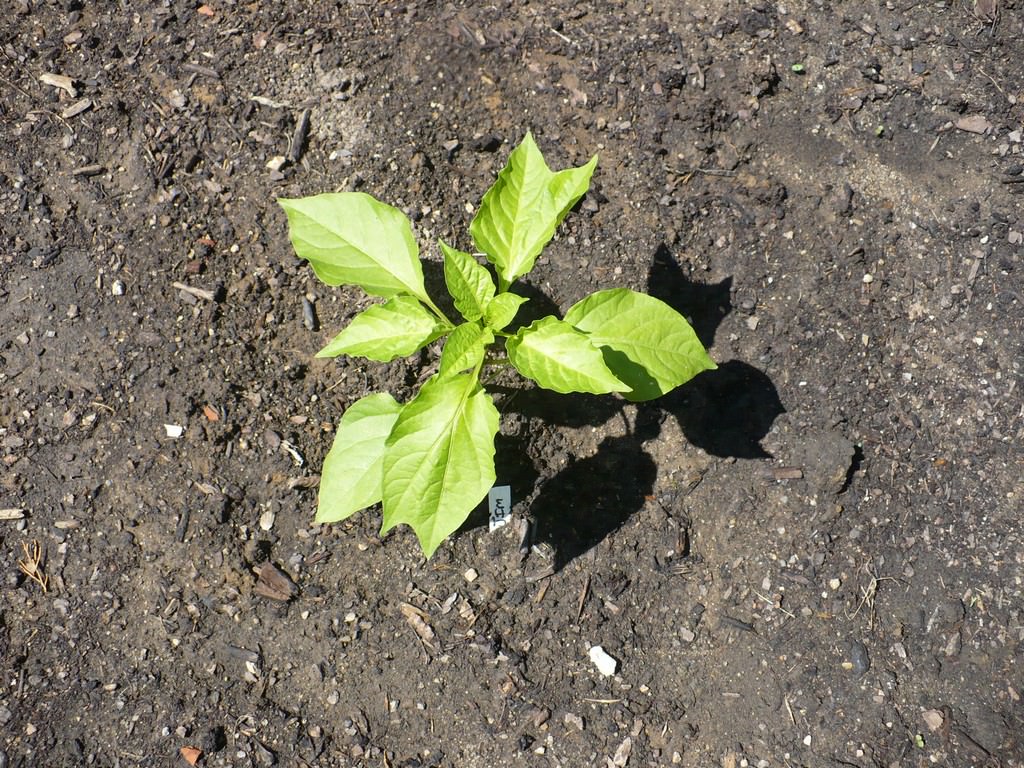

Was going to make a thread, but thought I'd poke around here a bit and see if anyone else had run into this before. And sure enough!
Here's a White Thai I have going with the same sort of leaves. I have 4 or 5 others that look normal. This is the only one like that.
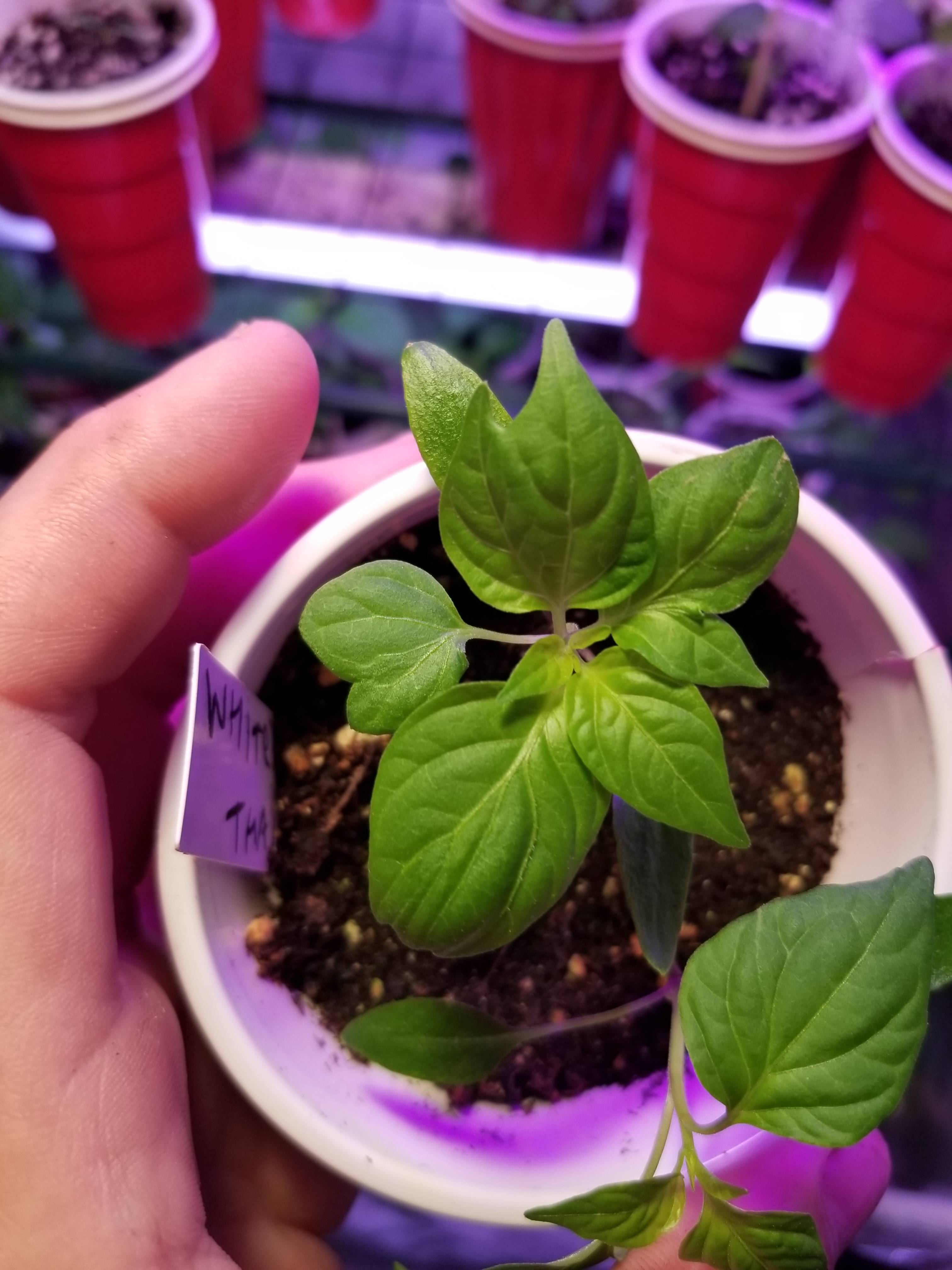
Here's a White Thai I have going with the same sort of leaves. I have 4 or 5 others that look normal. This is the only one like that.






